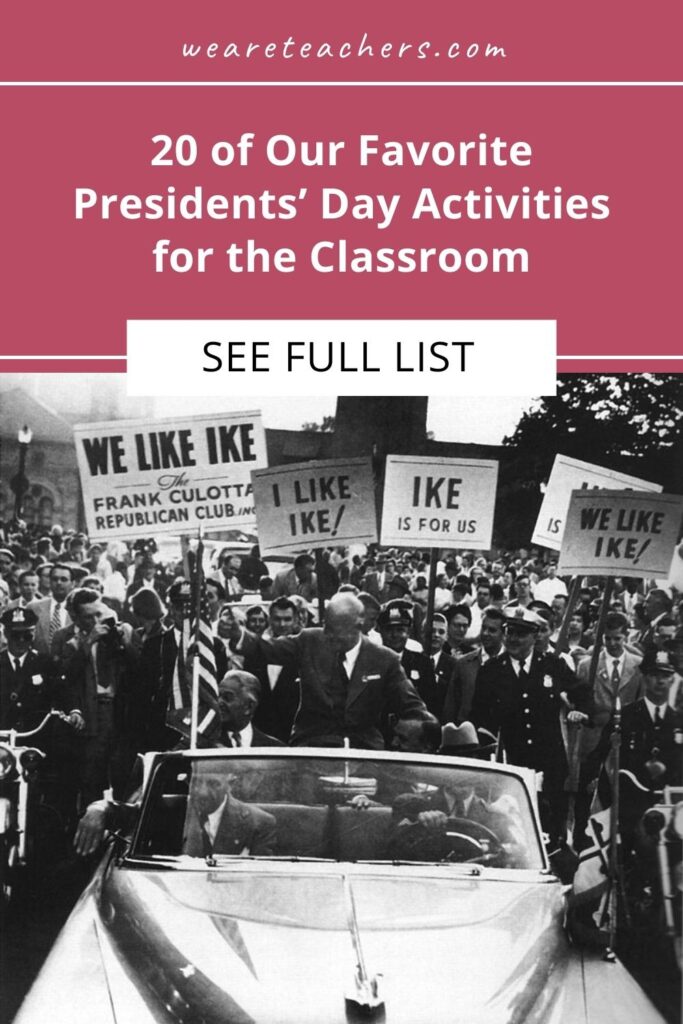For some, Presidents’ Day is associated with closed banks, interest-free financing on furniture, and excellent lease terms for well-qualified car buyers. But for teachers, it’s a great opportunity to kick those American history lesson plans up a notch with a few Presidents’ Day activities.
Originally established as a national holiday in 1885 in recognition of President George Washington, Presidents’ Day is now popularly viewed as a day to celebrate all U.S. presidents, both past and present. For educators, Presidents’ Day is a great opportunity to celebrate everything POTUS. Use the activities listed below or let them inspire you to create your own presidential lessons.
1. First and foremost, teach about Presidents’ Day in a socially conscious way
When Presidents’ Day rolls around, it’s tempting to reach for a standby lesson plan on Abe Lincoln’s log cabin or myths such as George Washington and the cherry tree. But the holiday presents an opportunity to go deeper and examine the traditional narratives surrounding past presidents. We know that presidents were not infallible historical characters, so here’s some advice and ideas for keeping it more honest for our students.
2. Watch how the American presidency came to be
Go inside one of the biggest debates in American history: how our founding fathers settled on the leader of the executive branch. This fascinating TedED video for elementary school kids breaks it down.
3. Put on a Presidents’ Day puppet show

How adorable are these guys? These DIY finger-puppet presidents are perfect for younger students to act out some of these presidential fun facts. Use felt, glue, lace scraps, markers, and quarters (Washington) and pennies (Lincoln) to celebrate the birthday boys. Then add in other coins for more presidential fun.
4. Read our picks for great presidential books for the classroom

Read-alouds are perfect for Presidents’ Day activities. Honor all things POTUS with these awesome books for your classroom . This clever list engages readers from pre-K through middle school with presidential facts, history, and Presidents’ Day fun.
5. Write letters to President Biden

Nothing shows our democracy in action better than writing a letter to the Commander in Chief. During a class discussion, have students share what matters most to them. Encourage students to share their big ideas and ask questions in their letters.
Here’s the address:
The President of the USA (or write the president’s name)
The White House
1600 Pennsylvania Ave. NW
Washington, DC 20500
6. Celebrate with a Presidents’ Day trivia game

Image: ProProfs
Students love a good trivia game. Online resources abound in fact hunting and nailing down some great Q&A options for elementary grades. Print out fact sheets and team students up to study together. Have older students team up to find their own questions and challenge opposing students on game day.
The White House Historical Society has great thought-starters on presidents, first ladies, and even their beloved pets. Which first lady was the first to decorate the White House for Halloween? Why did President Woodrow Wilson keep a flock of sheep on the White House lawn? You might have trouble deciding which fun facts are the coolest!
7. Try a Presidents’ Day–inspired STEM experiment

Break out those quarters and pennies again (add in nickels, dimes, and half-dollars too)! Science mixed with history makes this coin experiment fun to do in small groups. The students can predict, record, and chart their findings. Did they guess correctly? What’s the science behind this coin trick? For more fun, check out these Presidents’ Day coin activities.
8. Watch a Presidents’ Day video
Add this awesome collection of Presidents’ Day videos to your list of Presidents’ Day activities. They cover the history of the day, plus lots of fun and interesting facts about each of our presidents. Use them as a lead-in to some of the other Presidents’ Day activities in this article!
9. Go on a presidential scavenger hunt
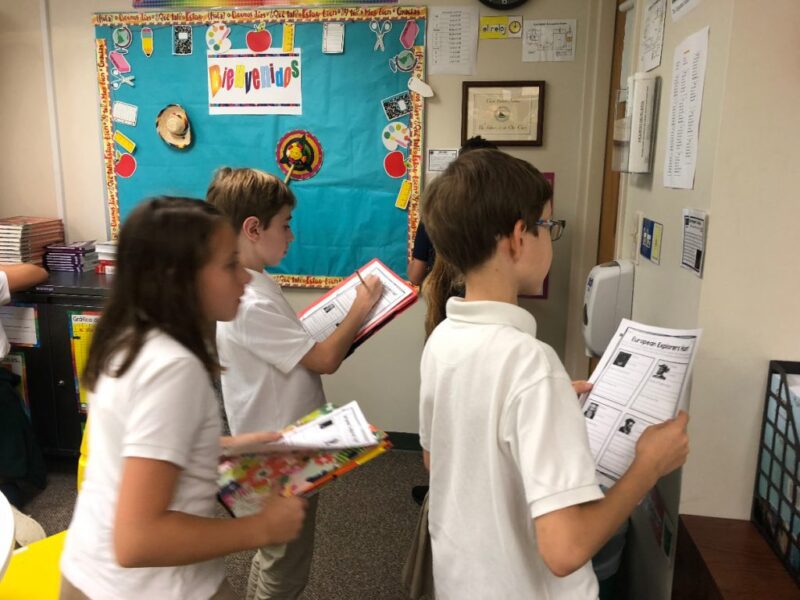
Image: Unquowa School
Send your students on this super-cool online Presidents’ Day scavenger hunt. Solve clues to track down American presidential facts. Download the scavenger hunt printable and start exploring!
10. Talk about what traits make a good president

What makes someone a good leader? What would your students do if they held the highest office in the land? We love how blogger Kindergarten Smiles had her kids do individual portrait art and answer the question What would make you a great president? Log the results or create an anchor chart to serve as a reminder to students about the value of good leadership qualities. It’s the lesson that lasts a school year and beyond.
11. Learn about the Electoral College
Help students understand how a president gets elected by introducing them to the Electoral College. Share the history behind the college, why it exists, and which states have the most—or fewest—electoral votes. Be sure to discuss times when a candidate has won the popular vote but lost the electoral vote. It would be a great springboard for older students to discuss whether the Electoral College should be part of the process of electing a president.
12. Dive into our country’s election process
If the last few elections have proven anything, it’s that our country’s election process can be complicated. Dive into the topic with our roundup of top teacher books about elections, plus election videos for kids.
13. Play a hometown matching game
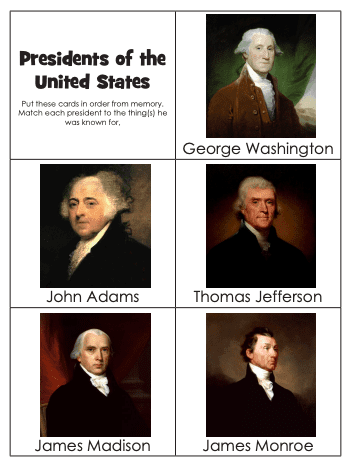
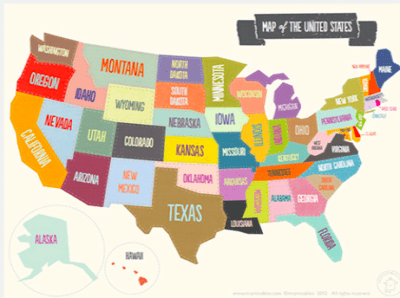
Do your students know that Virginia has produced more U.S. presidents than any other state? Save and print these images of the U.S. presidents and cut them out. Then as a class or in small groups, place those images in the president’s home state. As an added twist, make multiple copies of the images and plot the presidents both in the state they are most often associated with and where they were born. (For example, Barack Obama would be placed in both Illinois and Hawaii, and Andrew Jackson would be placed in both South Carolina and Tennessee.)
You might also play a different sort of matching game: List all 50 states and the year they joined the union as well as presidents Washington–Eisenhower’s years of term(s). Challenge students to identify who was president when the state(s) joined the union.
14. Explore Mount Rushmore

Mount Rushmore is one of the most iconic monuments in the United States, and the National Park Service has excellent resources that help students understand everything that went into creating it. Their curriculum covers geology, math, history, visual arts, and more. Learn why the four presidents were chosen and discuss with your class which presidents they’d put on Mount Rushmore and why.
Be sure to incorporate the perspective of the indigenous Lakota Sioux tribe, whose sacred land is the site of Mt. Rushmore. And use that as a springboard to learn more about the Crazy Horse Memorial.
15. Engage in the art of the campaign

Source: Library of Congress
Yes we can. I like Ike. All the way with LBJ. Slogans and campaign art are sometimes the most memorable aspects of a presidential campaign. Check out a slideshow of some of the best campaign art over the years and share the images with your class. Then encourage students to make their own slogan and accompanying art—they can reinterpret an existing one, create art for an imaginary candidate, or create art for their own future presidential campaign.
16. Examine the art of speechmaking
We often remember presidents not simply by what they did but by what they said, for example, Washington’s Farewell Address, the Gettysburg Address, and FDR’s fireside chats. There are many speeches that you might share with your class. You might compare speeches, discuss the art of the persuasive speech, or talk about what makes a speech good or bad.
17. Learn the names of all the presidents, in order
Memorizing the names of the presidents in order may not be a skill needed every day. But if you ever want to be a contestant on Jeopardy, you’ll be glad you know! Plus, singing in class is fun!
18. Play the Presidents Game
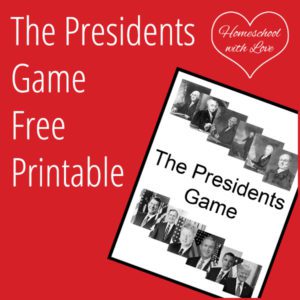
Card games are a great tool to teach facts about Presidents’ Day. This rummy-style game is easy to assemble and play. It’s suitable for ages 8 and up and can be played by two to four players.
19. Create a presidential timeline
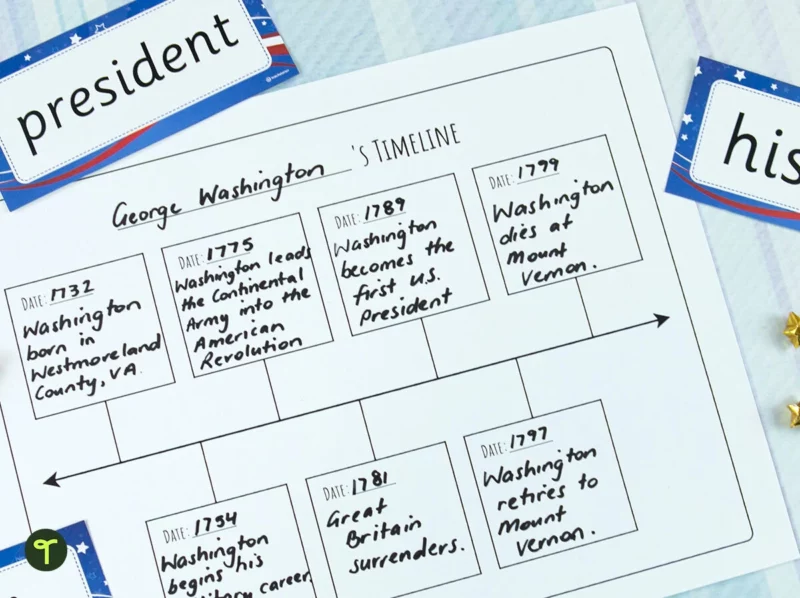
Assign students a president to research, then have them display their knowledge on a presidential timeline. Students can work independently on their own timeline or team up with a partner. Once everyone has completed theirs, post the timelines and have students do a gallery walk, taking notes on a note catcher.
20. Take a virtual tour of the White House
Most people recognize the White House in Washington, D.C., but there is much more to the building than meets the eye. Learn more about the architecture and functional purposes of the White House.
What are your favorite Presidents’ Day activities? Share your ideas in our WeAreTeachers HELPLINE group on Facebook.
Plus, check out our Black History Month activities.
